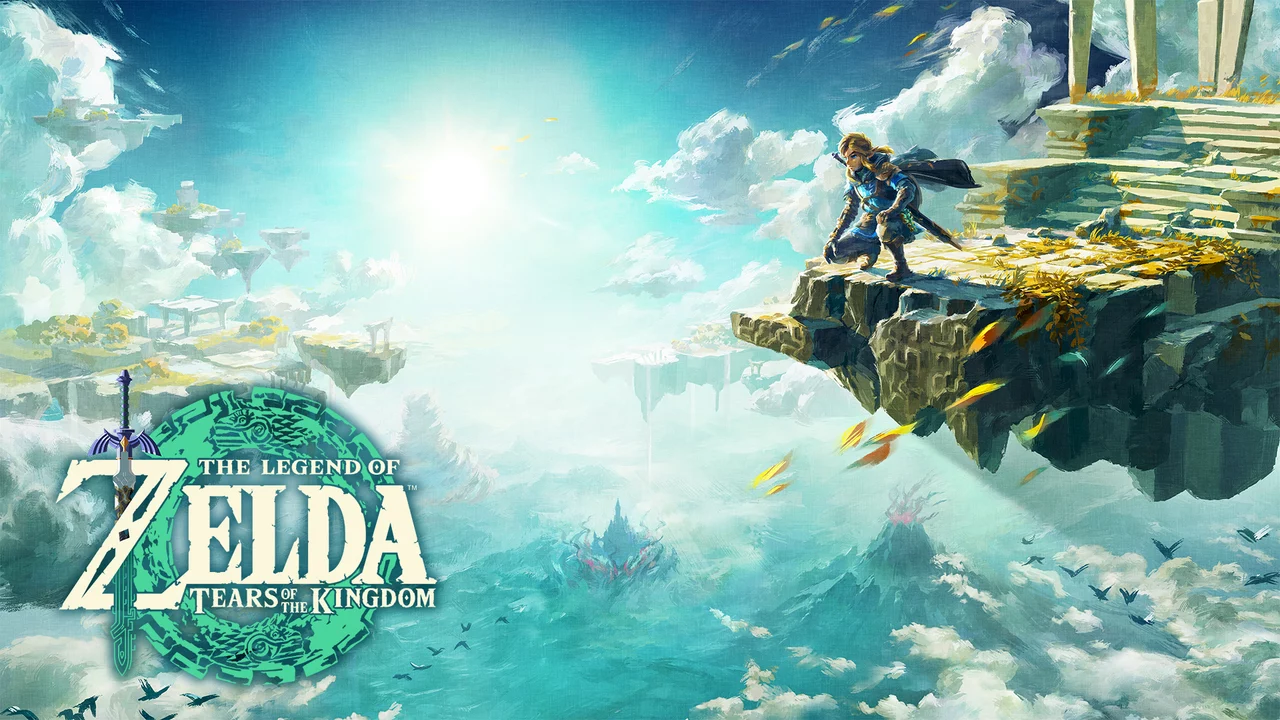Storytelling Through Sound: Tears of the Kingdom’s Dynamic Soundtrack
Posted on July 06 2024 by Connor Butler

Welcome back to “Storytelling Through Sound,” a series of editorials dedicated to the analysis of the major musical themes from every Zelda game. In this edition, we’ll be discussing one of the most interesting parts of Tears of the Kingdom‘s sound design: its dynamic soundtrack. We’ll take a look at what it means to have a dynamic soundtrack, and then we’ll talk about some of my favorite examples from Tears of the Kingdom. Let’s jump right in!
What’s a Dynamic Soundtrack?
When playing any video game, I always find it more enjoyable if the soundscape that the game provides is effective. Sometimes a title can provide one of the greatest video gaming experiences ever, yet it demonstrates a sound design so boring that the whole experience falls flat on its face. Since games are constantly evolving and becoming more advanced, it’s only natural that sound design evolves along with it. In recent years, the music of video games has started to take an interesting turn towards a technique known as dynamic soundtracks.
A dynamic soundtrack, also known as an adaptive soundtrack, is music within a game that changes when certain events occur. This certainly isn’t a new technique, as it was used as early as 1981 in Konami’s classic Frogger, but the way it’s been utilized in recent years has been incredibly innovative. One of my favorite non-Zelda examples is the soundtrack for Paper Mario: The Origami King. This game’s soundtrack not only sounds amazing, but it also perfectly utilizes the dynamic soundtrack.
When you enter a battle in The Origami King, the music kicks in immediately. It’s almost always fast, high energy, and loud. In the example above, you can hear a full brass band, with electric guitar, keyboard, and drums backing it up. How exciting! However, the music shifts when it’s Mario’s turn in battle. In this game, there is a sequence in every battle where you must line up enemies to deal more damage. When this segment begins, the music strips down, and the only instruments that can be heard are the keyboards, the bass guitar, and a softer version of the drums. It brings the energy down for a moment, giving the player audible space to think about their next move. After you line everyone up and select an attack… BOOM! The music kicks right back up and the energy returns!
The above video contains just the generic battle theme for Toad Town. Every area in the game, along with every boss battle, has this dynamic soundtrack style. It’s insanely impressive, and it gives the player a sense of just how much recording was done to create the soundtrack for this game. It’s such a little detail, but it makes the gameplay experience so much more invigorating.
Tears of the Kingdom’s Battle Music
Now we can dive into a couple examples of how Tears of the Kingdom utilizes this technique. The first example comes in the form of the game’s battle music. Every time you approach an enemy in Tears of the Kingdom, the music changes depending on where you are in the game. The actual musical content of the battle themes between the Surface, Sky, and Depths is all the same — the melody and harmony do not change — but the instrumentation does change. When you’re on the Surface and in the Sky, you’re greeted by a full orchestra. When you’re in the Depths, the orchestra is scaled back a bit, and there is a synthesizer playing the melody. It’s a tiny detail, but it makes the areas seem a little bit more alive.
Moving beyond the area-specific battle music, Tears of the Kingdom‘s soundtrack also adapts to players’ actions in some interesting ways. Next time you’re locked in battle with an enemy, take a close listen to the score as you land a hit. The music is interrupted by a cymbal crash, drum hit, or piano flourish whenever a hit lands! That’s another tiny detail that makes all the difference. The most impressive part of this contextual instrumentation is that all of these hits occur within the timing of the music. It’s not a free-for-all on where these hits occur. When your weapon strikes an enemy, the game waits until the next convenient sounding beat in the music to sound the cue, just to make sure these small sound effects aren’t jarring.
The last bit of dynamic battle music comes from the Proving Grounds Shrines. The music in these Shrines is a variation on the standard battle music for a Shrine, but it has a few more layers. When you first enter one of these Shrines, you are greeted by a singular synthesizer playing a simple melody, backed by a soft choir, with a gong hit interspersed every now and again. When you are noticed by an enemy, the music’s energy ramps up. A few other synthesizers join the mix, as well as a piano and some light percussion. These added layers help build the tension. Once you are locked in complete battle with the Constructs, the music reaches its peak! The synthesizers gain some more friends, and the piano is joined by a violin. The percussion is now full and loud, and the energy is through the roof.
The fun thing about these dynamics is that the music can also return to its original, low-energy forms. If you manage to sneak away from the Constructs that you were fighting against, the music will return back to Level 2; and if you get far enough away that the Constructs ignore you, the music returns to the choir and synth. It sounds simple, but these tiny details help keep the battles fresh and keep the energy where it needs to be at any given point.
Location-Based Adaptive Music
The next part of Tears of the Kingdom‘s dynamic music comes in the form of location-based music. This is by far one of the most impressive pieces of soundtrack building, and it’s not hard to hear why. In certain locations throughout Tears of the Kingdom, the soundtrack changes as you move through an area.
If you’re moving consistently through an area, you might be tricked into thinking that the music naturally progresses over time. However, this isn’t quite true. While each track in the game is composed in a way that encompasses energy buildups over time, the location-based dynamics ensure that the music never hits its peak too early. One of the first examples of this feature is in the approach to the Stormwind Arc in Hebra. When you play through the “Tulin of Rito Village” quest and finally begin your journey towards the storm cloud, the music begins soft and somber, with just piano. As you get closer though, the music increases its instrumentation, becoming a full-blown orchestra once you reach the ship itself.
My favorite example of location-based dynamics actually contains a callback to the very beginning of the game. When you begin Tears of the Kingdom, you start off underneath Hyrule Castle, and you find your way to the chamber where Ganondorf is sealed. As you progress through this portion of the game, there is a soft but spooky reversed vocal melody happening. The closer you get to the Demon King, the louder this vocal melody is, becoming a very menacing piece once you catch sight of the mummified corpse.
At the end of the game, you return to the area beneath Hyrule Castle to destroy Ganondorf and put an end to his reign of terror. As you re-enter the Forgotten Foundation, the spooky reversed vocal makes its return, just as you heard it in the beginning. As you make your way through the catacombs of Hyrule Castle, the music similarly crescendoes, but this time, the mood is a little different.
Now that Link has freed the five Secret Stones from Ganondorf’s grasp, has awoken the Sages, and has received the Master Sword, he knows that he will be triumphant in this battle. The music reflects this triumphant energy, as the reversed vocal melody is joined first by a low choir once you make it to the imprisoning chamber. As you dive deeper into the earth, the crescendo becomes more evident. The spooky choir and vocal melody are joined by a lush orchestral string section. As you approach the final dive pad, a frantic and jarring piano comes in. At this point, the music is reminding you that not only are you the hero, destined to fight this fight and win, but it’s reminding you that winning will be no easy task.
When you make the final jump, the music hits its peak. Brass instruments join the fold, playing bits and pieces of Ganondorf’s theme, while increasing the energy. This final push to the last area of the game was exactly the kind of energy I needed to motivate myself to finish this fight. There’s gravity in this piece of music, and its dynamic nature makes it even more effective.
Conclusion
Tears of the Kingdom is an absolutely massive game. There are so many different things to see and do that it’s almost overwhelming. In a game this big, it would have been easy for a development team to skip some of the smaller details. However, Nintendo went the extra mile.
The dynamic soundtrack of Tears of the Kingdom is one of those aspects that is almost barely noticeable, but it’s a massive cherry on top to the whole experience. I can only imagine how difficult it was for the sound design team to compose and implement these different pieces of music, as well as have them all transition seamlessly into one another without being jarring or strange. It’s an amazing feat of engineering, and it makes the game so much more special.
Dynamic soundtracks are the future of music in gaming. We’ve only just scratched the surface of how effective this musical technique can be, and I cannot wait to hear what the Zelda team and other development teams do with it next.
What are some of your favorite dynamic soundtrack moments from Tears of the Kingdom? Let us know in the comments!

Connor is an avid Zelda fan and Musician currently obtaining his degree in percussion performance from Western Carolina University. His favorite game in the Zelda franchise is a toss up between Breath of the Wild and Ocarina of Time, but he has a soft spot for the Wind Waker.




